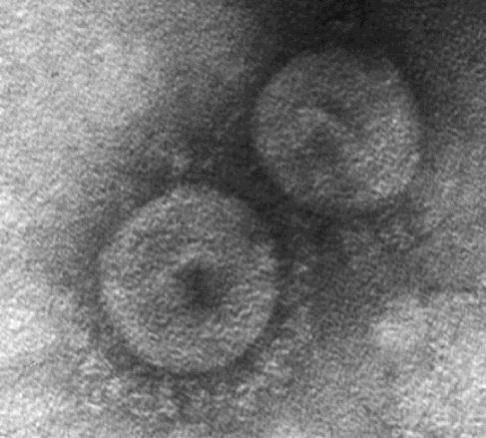As COVID-19 continues to persist, fears surrounding new pathogens and future pandemics are rife. There are several undiscovered coronaviruses—which under the right conditions—can become pathogenic to human beings. Now, a new study reports the discovery of a new coronavirus in Malaysia in 2018.
According to a study that was published on 20 May 2021, the coronavirus was found in patients hospitalized with pneumonia in Sarawak, Malaysia, and may have jumped from canine to human. If the virus is confirmed to be a pathogen, the novel canine-like coronavirus will have the distinction of becoming the eighth unique coronavirus known to cause illness in human beings.
"How common this virus is, and whether it can be transmitted efficiently from dogs to humans or between humans, nobody knows. What's more important is that these coronaviruses are likely spilling over to humans from animals much more frequently than we know. We are missing them because most hospital diagnostic tests only pick up known human coronaviruses," said Dr. Gregory Gray, lead author of the study, in a statement.
Wearing a Lethal 'Crown'

Coronaviruses comprise a group of related viruses belonging to the family Coronaviridae. They are enveloped RNA viruses (i.e) they are surrounded by a lipid membrane and RNA forms their genetic material. Some of these viruses can cause diseases in human beings and animals. Respiratory illnesses are the most common form of sicknesses that they lead to in human beings. Common cold, Influenza, SARS (Severe acute respiratory syndrome), and MERS (Middle East respiratory syndrome) are all examples of coronavirus-caused diseases.
Species-specific coronaviruses such as feline and canine viruses do not affect human beings. However, the 'jump' of coronaviruses from animals to human beings is not unheard of. This exchange can have lethal outcomes for humans. For example, it is believed that SARS-CoV-2 likely originated in bats before making the jump to human beings; probably through an intermediary host.
Identifying New Virus
In 2020, Leshan Xiu, co-author of the study, was involved in the development of a molecular diagnostic tool for the detection of nearly all coronaviruses belonging to the family Coronaviridae, including the SARS-CoV-2. Using this tool, the research team examined 301 nasal swabs samples from pneumonia cases. During the course of their investigation, the authors identified signals for canine coronaviruses among eight individuals(seven children and one adult) who had been hospitalized with pneumonia in Sarawak between 2017 to 2018.

Led by Dr. Anastasia N. Vlasova, lead author of the study, scientists at Ohio State University cultivated a virus from one of the acquired clinical specimens. This was followed by the laborious gene reconstruction which led to the identification of the novel canine-feline recombinant alphacoronavirus— CCoV-HuPn-2018.
In addition to other canine coronaviruses such as CCoV TN-449, the virus was also found to have close similarities with other coronaviruses such as the feline coronavirus (FCoV) and swine transmissible gastroenteritis virus (TGEV), and also the SARS-CoV-2. This established that the virus was indeed a novel virus within the Alphacoronavirus 1 species (a species of viruses that infect cats, dogs, and pigs).
No Cause for Immediate Worry
While the news of the discovery of a new coronavirus is sufficient to induce panic, the authors assured that there is no cause for immediate worry. "There are probably multiple canine coronaviruses circulating and spilling over into humans that we don't know about. Many of those spillovers are dead ends, they don't ever leave that first human host," stated Dr. Gray.

According to Dr. Gray, diagnostic tools such as the one developed to detect the new virus can help identify other viruses—that are new to humans—before they can give rise to a pandemic. So must one be worried about a COVID-like situation? "These pathogens don't just cause a pandemic overnight. It takes many years for them to adapt to the human immune system and cause infection, and then to become efficient in human-to-human transmission. We need to look for these pathogens and detect them early," reassured Dr. Gray.
Dr. Vlasova opined that the information surrounding the severity of CCoV-HuPn-2018 is still scarce, but did not rule out a potential pathogenic role in the future. "We don't really have evidence right now that this virus can cause severe illness in adults. I cannot rule out the possibility that at some point this new coronavirus will become a prevalent human pathogen. Once a coronavirus is able to infect a human, all bets are off," she said.
Need for Vigilant Surveillance

The findings of the study also underscore the importance of vigilant surveillance of new pathogens that may possibly be lethal to human beings. "But if we really want to mitigate the threat, we need better surveillance where humans and animals intersect, and among people who are sick enough to get hospitalized for novel viruses," stressed Dr. Gray.
Though the new virus may have potentially originated in dogs, Dr. Vlasova expressed that people do not have to drastically alter the manner in which they interact with their dogs following the findings of the study. Nevertheless, she emphasized that the interaction between young children and dogs could use some moderation. "But I would definitely be watching a little more how much I allow my babies around dogs. Seven of the eight people hospitalized in Malaysia and found to be infected with the CCoV-HuPn-2018 virus were children, one as young as 5 1/2 months old," she noted.









!['Had denied Housefull franchise as they wanted me to wear a bikini': Tia Bajpai on turning down bold scripts [Exclusive]](https://data1.ibtimes.co.in/en/full/806605/had-denied-housefull-franchise-they-wanted-me-wear-bikini-tia-bajpai-turning-down-bold.png?w=220&h=138)



